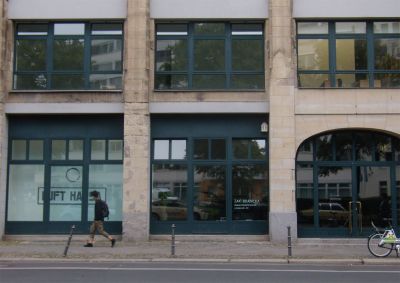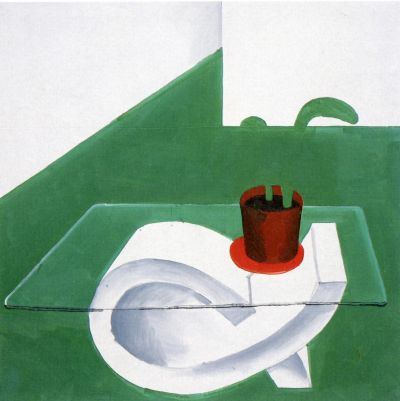Gallery ŻAK | BRANICKA, Berlin

The exhibitions in 2008 included a poster project by the Macedonian artists, Yane Calovski and Hristina Ivanoska (*1973), featuring an outline of a hypothetical museum designed by the Polish architect, Oskar Hansen (1922-2005), for the city of Skopje that had been destroyed by an earthquake in 1963; a monographic exhibition with large format photomontages by Zofia Kulik (*1947 Wrocław), whose work was shown at Documenta 12 in the previous year; an exhibition of drawings and prototypes by the Polish object, installation, photo, film and performance artist, Piotr Jaros (*1965 Myślenice); another by the multimedia artist, Hubert Czerepok (*1973 Słubice), who lives in Poznań and Wrocław, about a spaceship called “Haunebu” that had allegedly been found by the Germans during the Second World War. This was also one of the first exhibitions for which the gallery published a catalogue; there was also an exhibition entitled Fat Trout by the painter, Michał Jankowski (*1977), who lives in Zielona Góra; a show of geometric murals dealing with space and time by the painter, Jarosław Fliciński (*1963 Gdańsk); and finally, a video presentation entitled “Summer Tale” by the Warsaw media artist, Katarzyna Kozyra (*1963), whose work was shown in the Polish section of the Venice Biennale in 1999; as well as an exhibition by the Warsaw sculptor and video artist, Anna Baumgart (*1966 Wrocław), featuring her latest work, “The Hypothesis of the Stolen Image” (2008), based on a photo taken in 1961 during the building of the Berlin Wall.
Catalogues were also published for the exhibitions by Kulik, Jankowski, Fliciński and Kozyra. Since then these publications have been appearing as a series with an average of 10 pages in a uniform illustrated horizontal format: they can also be downloaded as PDF documents from the gallery's homepage. In addition, the gallery publishes an English-language newspaper four times a year, entitled ŻAK BRANICKA NEWSPAPER.
Monika Branicka says that it was never her aim to present a completely Polish programme. But since she had only recently set up her gallery in Berlin and had an insufficient number of contacts and no established network, she was not in a position to approach established, or even semi-established artists. Such artists would already have galleries working for them all over the world. On the other hand everything was different in Poland. Here there was no market for works of art and scarcely any galleries and collectors. Hence the gallery owners could simply approach the artists they most appreciated. “And these were, and still are, the best artists in Poland: Zofia Kulik, Józef Robakowski, and later Ryszard Wasko. These are the “classics”, who were also known in Germany.” From Berlin they kept an eye open for the most talented young Polish artists, some of whom were still studying at art academies in Poland and Germany. One of these was Agnieszka Polska (*1985 Lublin), who was in her third year at the Art Academy in Kraków and subsequently studied in Berlin; she subsequently took part in the 57th Venice Biennale, and in 2017 was nominated for the Berlin Preis der Nationalgalerie. She first exhibited her work in the gallery in December 2008 in a group exhibition featuring seven video artists from Poland: this was entitled “Video Point”, and featured the films “Video Gymnastics” and “Grass Film (Hair)”.





































